Circumambulating Space-Time: The Bicyclist Who Fell Into the Time-Cone
When a thing falls into the time-cone, does it disappear or does it lag, waiting to re-emerge in a new disguise on the other side of tomorrow?
This is the question animating Raqs Media Collective’s The Bicyclist Who Fell Into the Time-Cone (2023), the cinematic iteration of their multi-part project in response to the Jencks Foundation’s research theme “1980 in Parallax.” 1980 was a significant year in the practice of American architect and critic Charles Jencks, who brought the term “post-modern” into architectural discourse and contributed to its mainstream usage at the first Venice Architecture Biennale, The Presence of the Past, in the same year. For Raqs, the “film chronogram,” as the legacy of that moment, becomes a site of emanation, whence the light adumbrates the forty-four years in between and beyond.
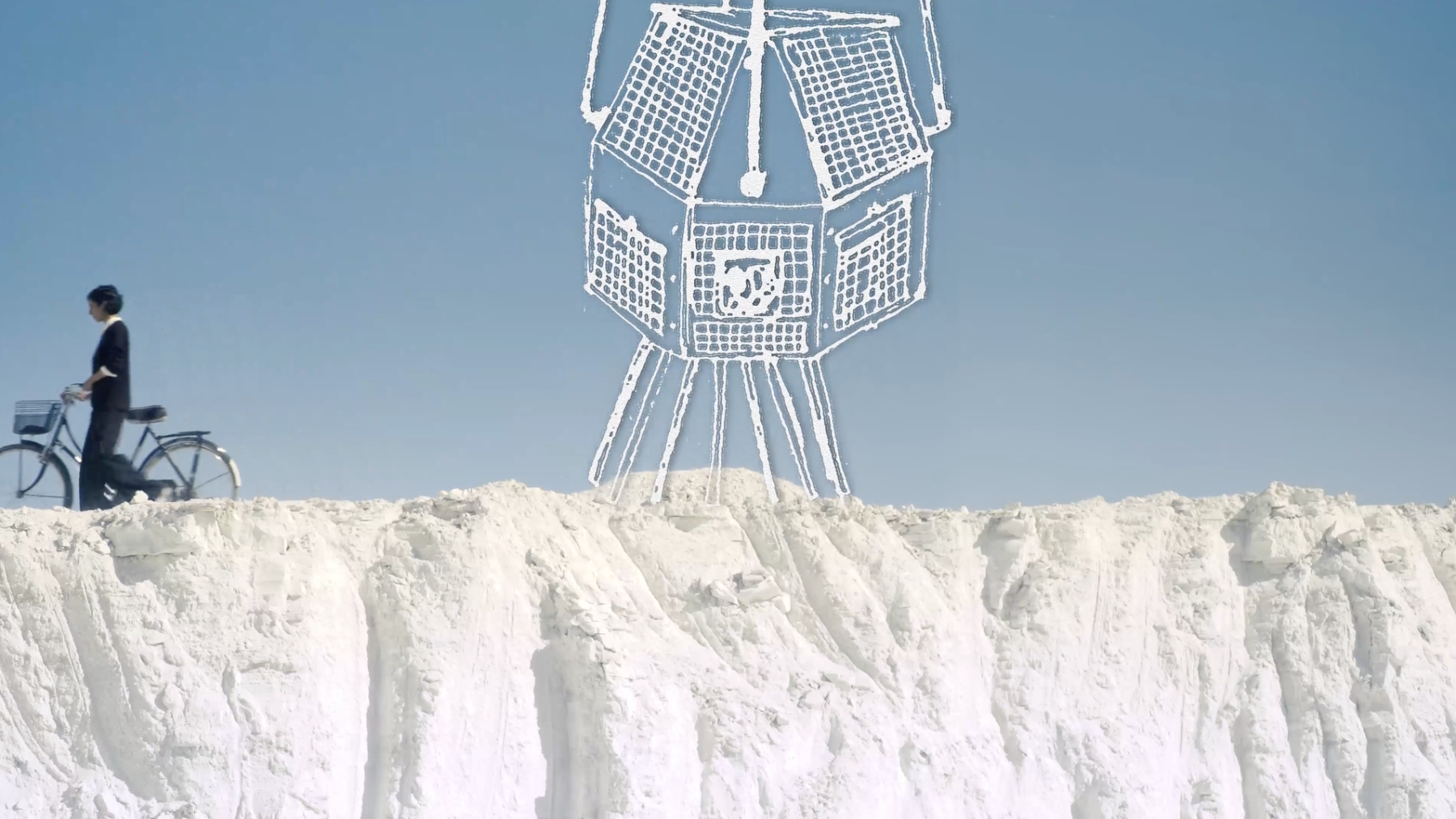
The vista of history illuminated is perceived through parallax, the astronomical term for the change in position of an object due to the change in the observer’s point of view, which the artists evoke as a metaphor. Countering the Euro-American focus of the inaugural Architecture Biennale, Raqs casts a long, speculative look at 1980 from a different vantage point and through the lens of an alternate experience. Incidentally, the word for long in some Indian languages is related to lamban, which means parallax in Sanskrit. Collaged against the traversals of the eponymous cyclist are archival excerpts, newly shot footage and animation, set to a narration by the Collective’s Monica Narula—an imbrication of non-synchronicities that speak to a parallactic vision. As the protagonist pedals across the ice-white scapes of the Kishangarh marble dumpyard or the green landscapes of Uttar Pradesh, fragments of the past intervene in the form of, for instance, old Doordarshan clips, Jencks’ photographs from his India visit, recordings of curiosity collections and images of vintage documents. The animations are overlaid on the surface of the film: drawings of the satellite and animals being referenced in the voiceover and, of course, topological diagrams, including the time-cone itself.
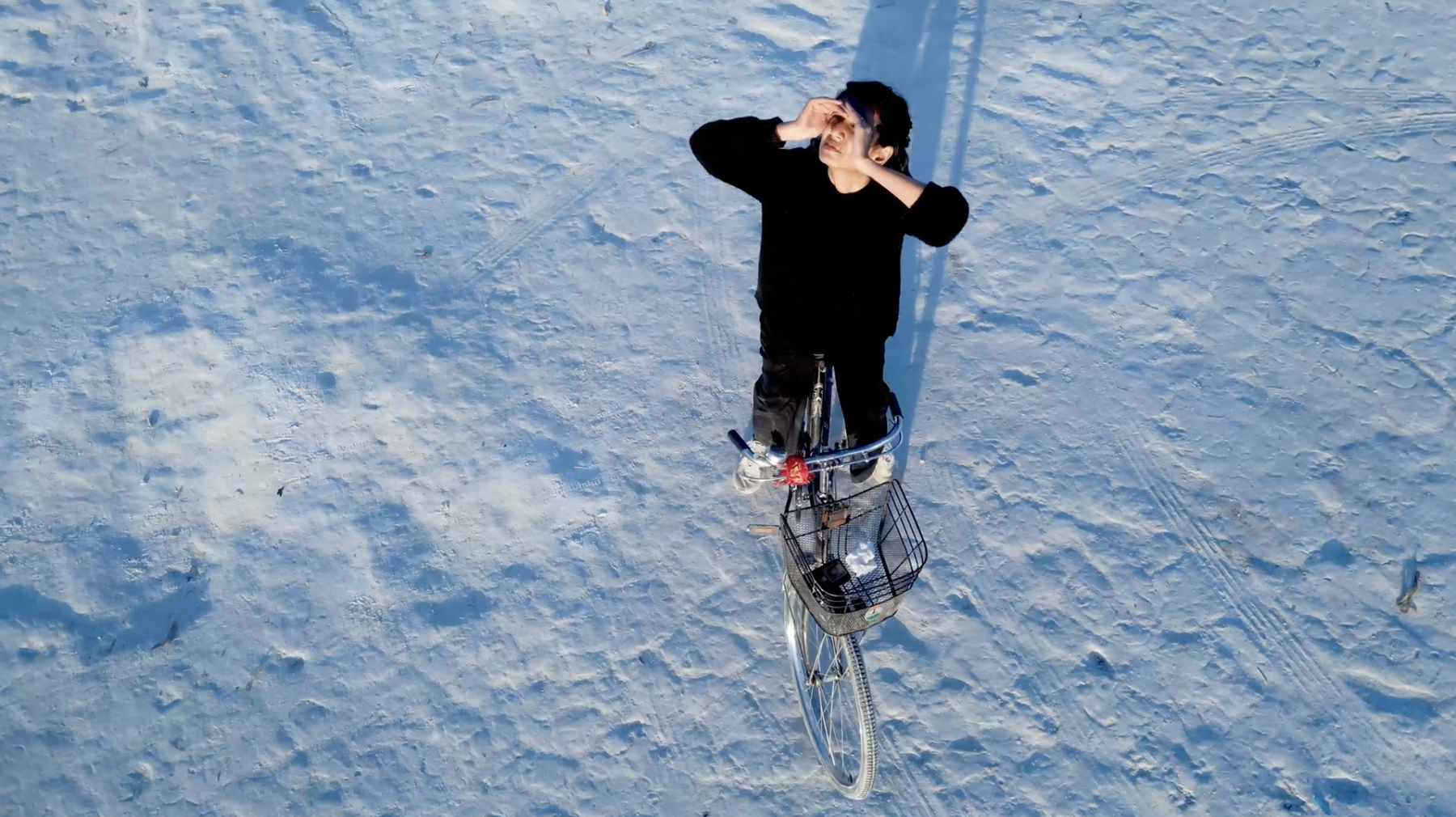
Part annals, part poetics, The Bicyclist Who Fell Into the Time-Cone combines fact with fantasy, recalling mediaeval annual calendars illustrated with “labours of the months,” the vignettes located in the same visual field as the inscription of the year’s timeline. In the course of the film, various historical events, occurrences and figures from the year 1980 are inventoried and identifiable through tantalisingly oblique descriptions. Punctuated with a graphic of square brackets that suggest an ellipsis or omission, the chronicle appears to restore them, encompassing incidents of various shapes, sizes and scales. The launch of the Rohini satellite and Sanjay Gandhi’s plane crash, for example, occupy the same axis as obscure news of livestock castration acts and a feral fish-boy. Mentions of the 1982 Asiad Games and the 1984 anti-Sikh pogrom are made with the same inflection as of colour television, which began transmission in 1982, and HIV/AIDS, which was first diagnosed in India in 1986.
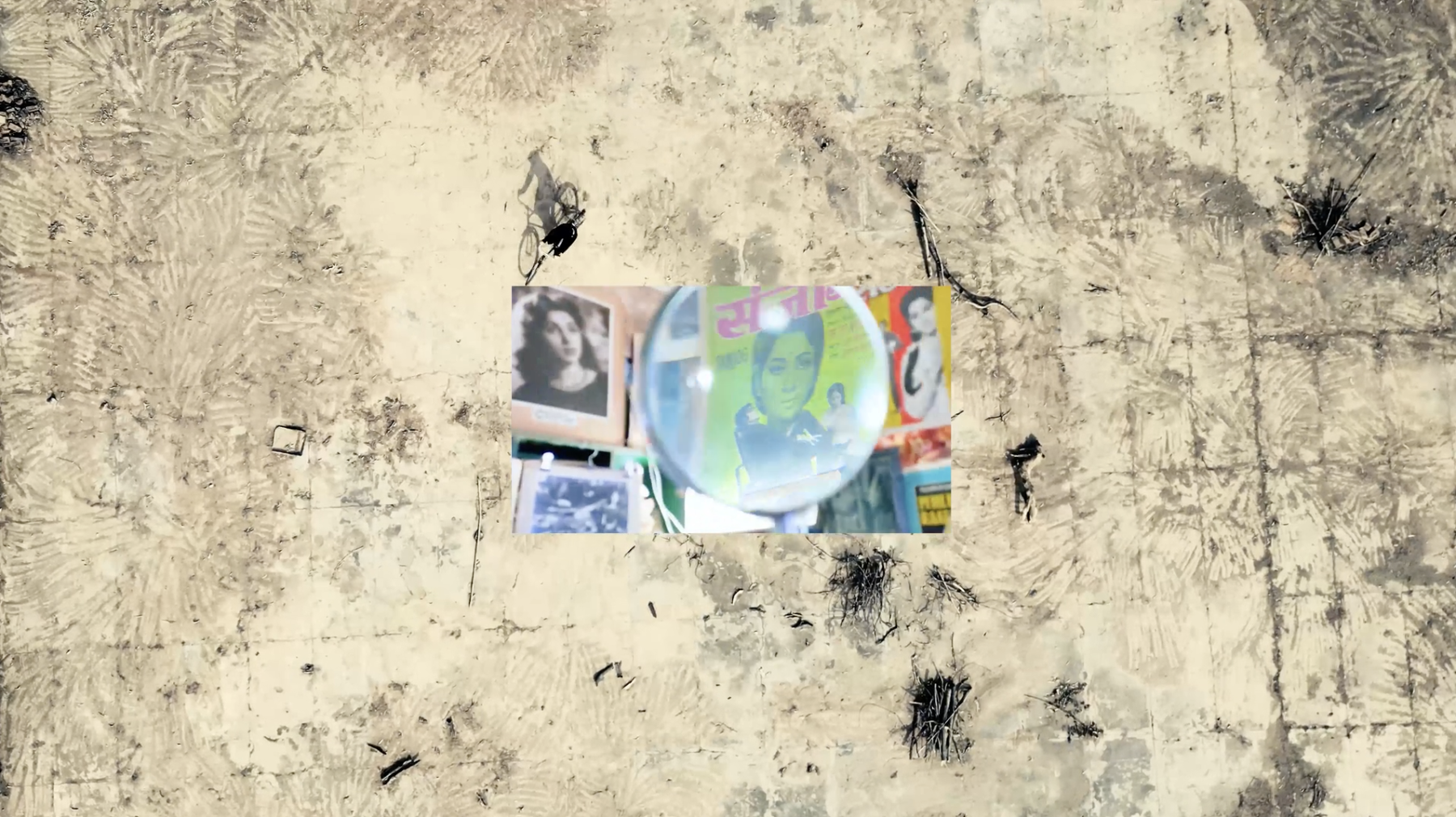
The film begins with an intertitle about the observance of silence before the first session of a newly elected Lok Sabha and ends with a mention of the start of the Soviet-Afghan war, both in January 1980. The two contiguous yet parallel incidents bind the narrative into a chronographic Möbius strip. Optical manoeuvres, such as the magnification of objects in a hoard or elements on a map, underscore the logic of the inset, details (“scattered insurgencies of unregistered time”) rescued from historical oblivion. Elsewhere, in the audio, the narrator’s simultaneous recitations of extracts from the Delhi Gazette render them incomprehensible, with official timekeeping neutralised.
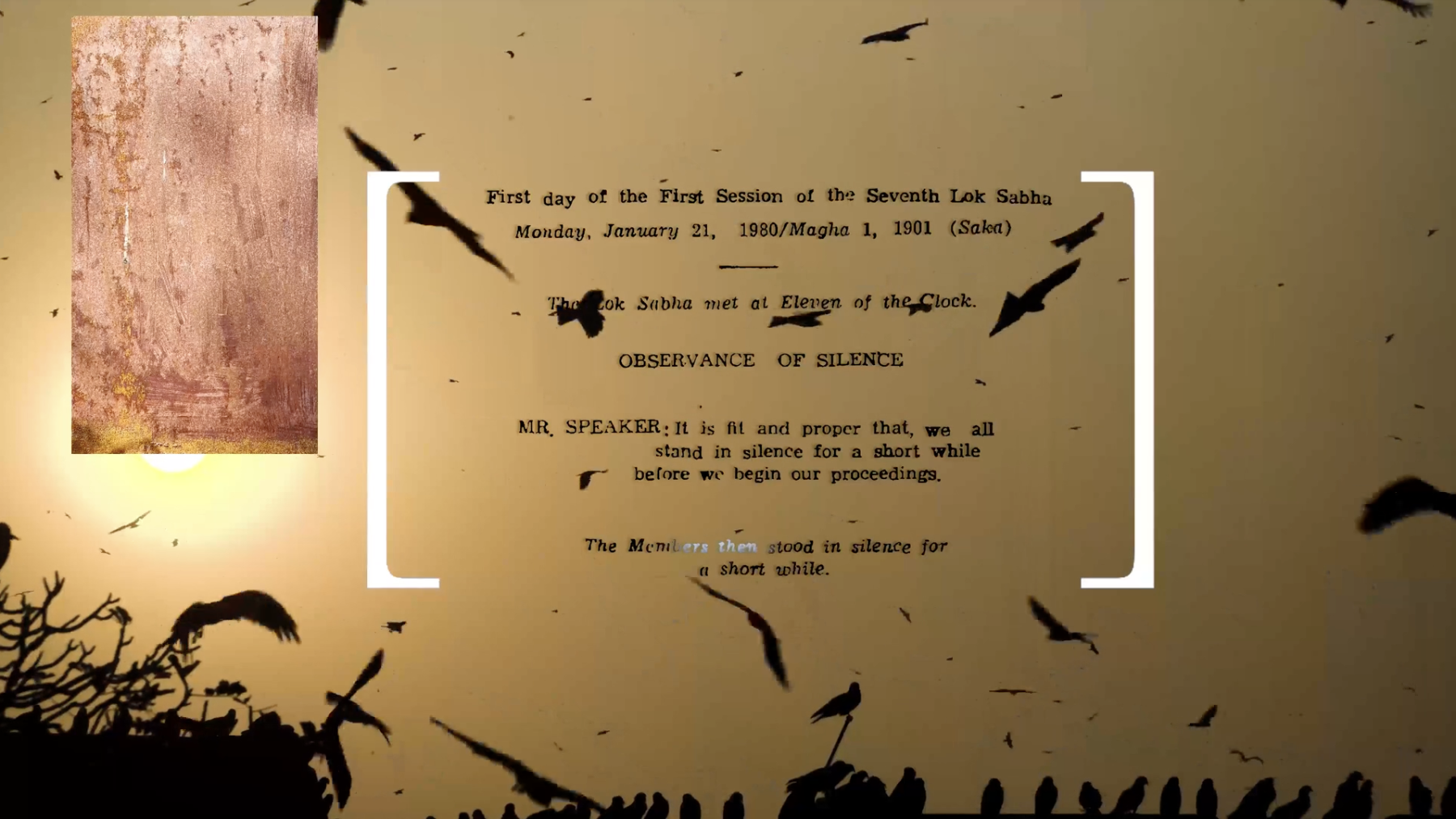
The syntax of inset, superimposition and aural overlap untethers history from causality by presenting images simultaneously in a single spatiotemporal frame. In one striking sequence midway through, three snapshots of the eighteenth-century Jantar Mantar observatory taken by Jencks slide onto the screen followed by visuals from its interiors, the assemblage of the building’s tectonic stripes rhyming with the cycle’s track marks on white terrain. Through a fractal iteration of patterns across layers, the bicyclist’s absent presence appears to intersect the archival sequence and architectural geometry, with multiple temporalities imaged as an hourglass-shaped velodrome/observatory.
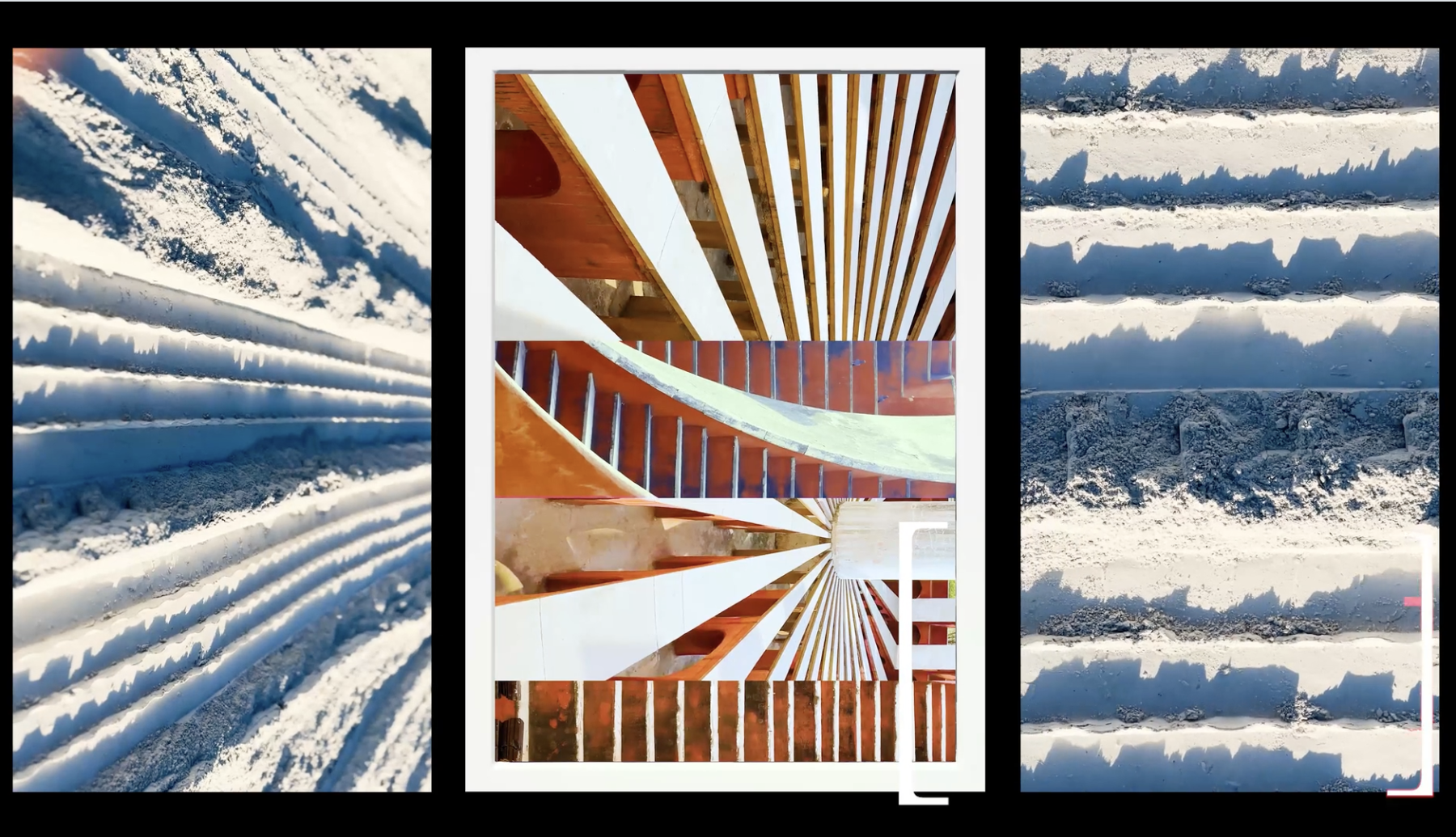
As history and temporality remain in a state of tension, memory is interrogated too. Analogue glitches, flickers and static distort state television snippets and crackle through the rotations of magnetic tape, rupturing the hypermnesia of postmodernism. The bicyclist’s nonlinear journeys and circumambulations are matched by drone shots of her looking upwards into the camera, as though marking the chiasma where the vertices of the time-cone meet. The moment acts as a blind spot within the film’s structure, where the object of perception becomes inscribed with the gaze and draws attention to the limits of the visual and temporal fields. What is memory in the absolute present, without image and time?
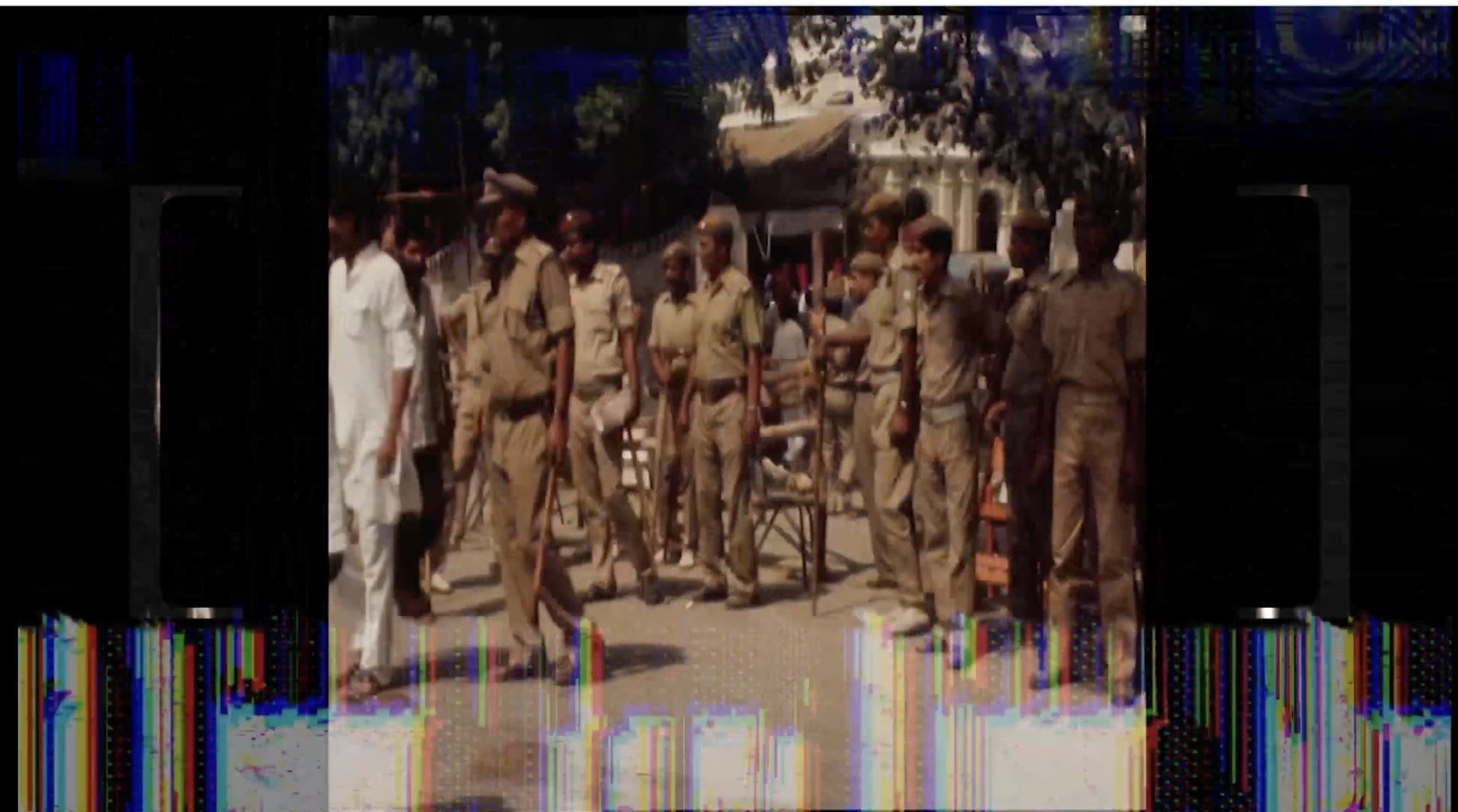
A voyage from Stanislaw Lem’s satirical The Star Diaries (1957) features time-travelling vehicles called chronocycles (complete with illustration), one example of which the protagonist describes as shaking “dreadfully on the curve of time (these are the so-called turning points in history).” As The Bicyclist Who Fell Into the Time-Cone comes to a close, these curves are foregrounded by the heroine’s circular movement around a dried tree, as though circling the rim of the time-cone. Were she to fall in, when would we see her again? A concluding text appears on screen: “There is a 1980 hidden in every year.” We may just need to shift perspectives to glimpse it.
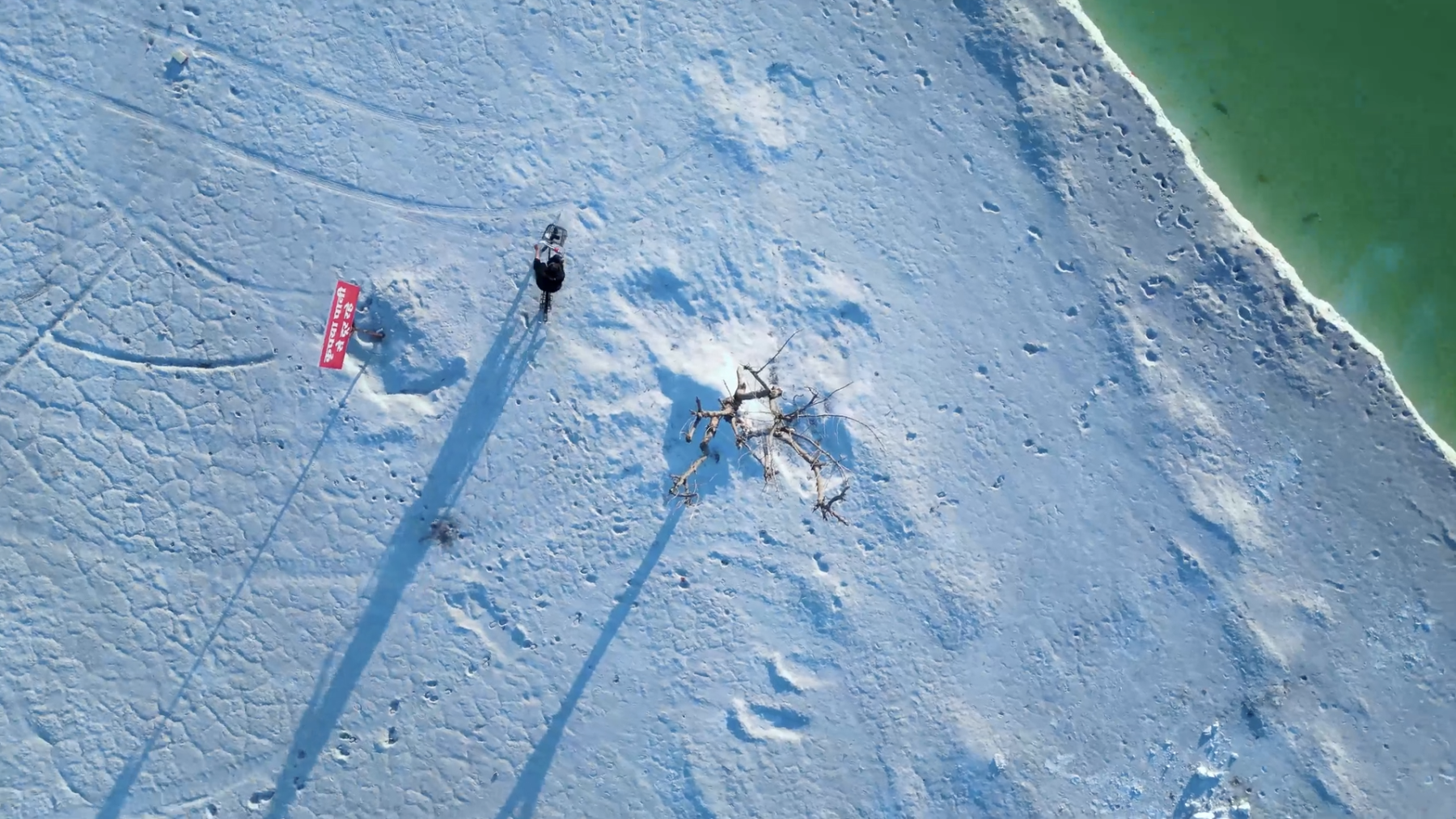
All images are stills from The Bicyclist Who Fell Into the Time-Cone (2023) by Raqs Media Collective, courtesy of the artists.
To read more the intersections between archives and speculative reimagining of time, revisit Najrin Islam’s essay on Jole Dobe Na (2021) by Naeem Mohaiemen, Mochu’s A Gathering at the Carnival Shop (2015) examined by Sukanya Deb, and Arundhati Chauhan’s review of Two Refusals (Would We Consider Ourselves Broken?) (2023) by Suneil Sanzgiri.




